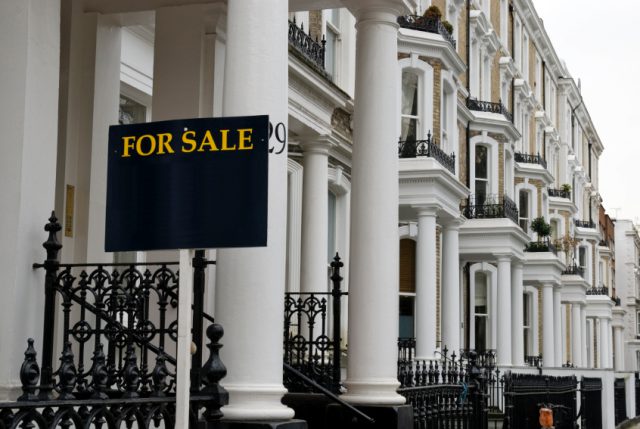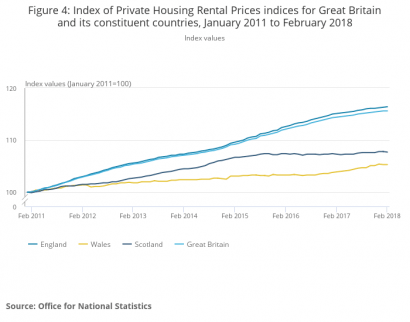Residential property transactions hit another low in prime central London during February 2018 (for which the most recent data is available), while new build sales plummeted, according to the latest Residential Index from investment advisory London Central Portfolio (LCP).
Prime central London
Following a strong January, due to some exceptionally high value property sales, house prices in prime central London fell by 4.6% in February, to hit an average of £2,165,829.
On a quarterly basis, transactions dropped by 2.3%, to 974, while sales were down by 5.7% year-on-year, to sit at 4,176.
The new build sector in prime central London suffered a 13.8% decline over the year, with quarterly transactions down by a whopping 56%, to stand at just 88.
Naomi Heaton, the CEO of LCP, says: “Following a number of high value sales being recorded in January, average monthly prices in prime central London have fallen by 4.6%. This in isolation might be significant. However, it follows five successive monthly rises, attributable to a growing proportion of high value sales as investors take advantage of significant price discounts. The volume of sales has dipped this quarter by 2.3%, although this figure is eclipsed by that of prime central London’s new build sector, which has suffered a 56% drop. Whilst annual transactions, at 4,176, remain at an exceptionally low level, 55% less than in 2007 just prior to the Global Financial Crisis (GFC), there are signs of encouragement. The annual fall is now just 5.7%, compared with a fall of 35.0% in the year running up to the 2017 General Election.
“Potential vendors are clearly still holding out for more favourable market conditions, but, given the low stock levels, it is likely that, when sentiment returns, there will be a bounce back in prices, as seen in 2009/10. Indeed, with sterling hardening, many overseas investors have a clock ticking with regard to picking up prime assets at a discount created by the referendum vote and serial increases in property taxation.”
She continues: “Turning to the controversial new build market, which has been most impacted by a downturn in international buyer sentiment, the sector continues to be volatile, with quarterly and annual price falls. Whilst a lag in registration of new build sales completions means reporting is six months delayed, annual transactions have fallen 13.8%. Quarterly transactions have plummeted to 88, 56% down on the previous quarter. As new build sales completions often represent historic transactions, this situation could worsen over the next two to three years, as new schemes, which may have failed to sell out at asking price due to reduced investor interest, come to completion.”
Greater London
In the month to February 2018, the average house price in Greater London fell by 1%, taking the typical value to £625,052. Annual house price rises have dropped to an average of 6.5%, with growth in the last quarter standing at just 2%.

Transactions Plummet in Prime Central London, Especially for New Builds
There has also been a significant drop in quarterly sales, of 10.4% – the largest fall since August 2016.
Quarterly new build prices have declined by 3.5% and represent just 15.6% of all sales in Greater London, compared with a peak of almost 20%. The average new build price is now £641,711.
Heaton comments: “Greater London is continuing to show a slowdown in growth, with a monthly price fall of 1%. Quarterly growth was just 2% compared with the previous year – one of the weakest performances seen in the last two years. Another cause for concern in the sector is the fall in transactions, amounting to 10.4% this quarter. This is the fifth consecutive drop, resulting in an annual fall of 7.3%. Despite Government efforts to stimulate transactions across the UK and in the capital, it appears that homeowners are prepared to sit tight until the current headwinds blow over. First time buyers may well be adopting the same approach, despite the reduction in Stamp Duty, which has done little to alleviate the issue of mortgage caps and the need for large deposits.
“Whilst wages remain relatively static, it is unlikely that we will see any major movement in the domestic market. This is exacerbated by the lack of affordable housing and a credible long-term housebuilding plan.”
She goes on: “This month’s report sees an even more disappointing picture for new build property than the market as a whole, with a drop in quarterly prices of 3.5%. Annual growth in transactions at 5.2% also appears to be slowing, falling from over 25% a year ago. As a result, the proportion of new build sales in the market has fallen to 15.6%, from a high of almost 20%. As new build sales completions often represent historic transactions, properties may be sold off plan several years before completion, making it difficult to read market sentiment. However, after a fairly robust 2017 thus far, we may be seeing a significantly suppressed market.”
England and Wales
Over England and Wales as a whole, LCP reports that house prices were down by 0.4% in the month to February. On a quarterly basis, prices fell by 0.5%, which marks the fourth consecutive decrease. As a result, annual house price growth stands at just 3.4%. The average house price in England and Wales is now £290,624.
Sales declined by 15.4% on a quarterly basis, which is also the fourth consecutive quarterly fall.
New build house prices have seen a 2% decline on a quarterly basis, and a drop in annual sales of 1%. The average new build house price is now £338,694 – 15.8% higher than for existing stock.
Heaton offers her thoughts on the figures: “Quarterly prices dropped by 0.5% in England and Wales, the fourth consecutive fall. Quarterly transactions have also fallen by 15.4%, again the fourth consecutive reduction. This does not paint an encouraging picture for the UK housing market as a whole. It highlights that the Government’s attempts to increase transactions, with Help to Buy schemes and Stamp Duty exemptions, are not proving very effective.
“One would hope the closer we get to Brexit that there will be more certainty in the housing market and the UK’s place in the revamped global landscape. LCP, however, does not see domestic homeowner sentiment changing significantly in the next year, particularly in the face of potential interest rate hikes.”
She concludes: “Despite the generally disappointing picture for England and Wales as a whole, annual prices in the new build sector increased 7.4%. There are, however, worrying signs, with quarterly prices down 2% and annual transactions dipping by 1.0%, the sixth successive month of falls. This may not be surprising, with average prices for new builds now reaching £338,694. At 15.8% higher than existing stock, new units are increasingly out of reach for typical domestic buyers. Overall, only 104,000 new builds were sold in the year to August 2017, still far short of the 300,000 which are projected to be needed each year.”







